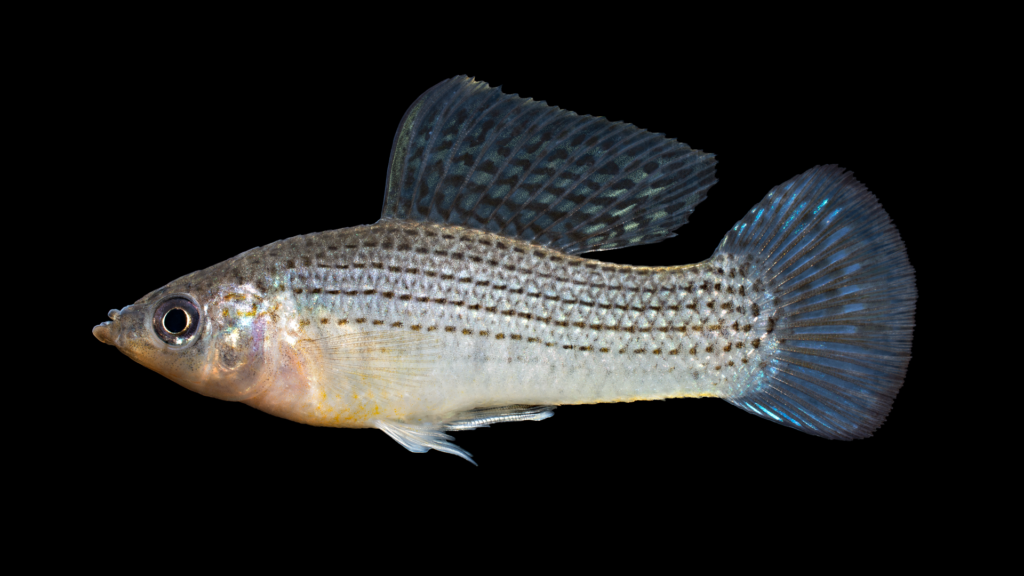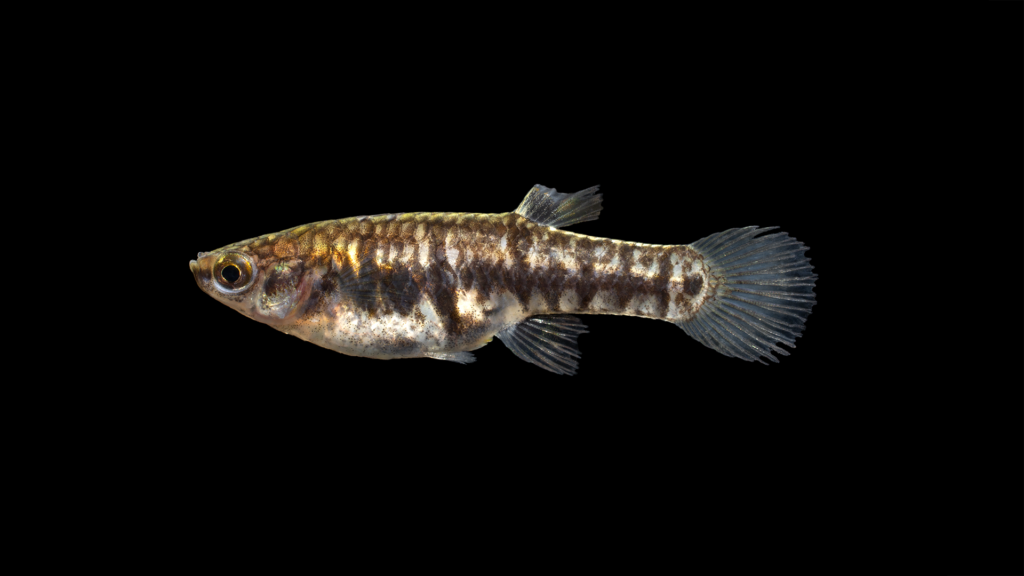By the NCFishes.com Team
North Carolina is home to four species of livebearers (Table 1) (Tracy et al. 2020). [Please note: Tracy et al. (2020) may be downloaded for free at: https://trace.tennessee.edu/sfcproceedings/vol1/iss60/1.] The common name of the family – Livebearers – stems from the fact that a female gives birth to live young, rather than depositing or scattering her eggs externally. A male fish impregnates the female using specialized anal fin rays termed a gonopodium. The family is as well-known to most lay people as are Goldfish (Family Cyprinidae). Pet shops are literally swimming with tanks of colorful guppies, mollies, and swordtails – all livebearers. Often the whole family is referred to simply as guppies or mosquitofish. But the American Fisheries Society has officially accepted common names (Page et al. 2013) (Table 1) and each of their scientific (Latin) name actually means something (please refer to The Meanings of the Scientific Names of Livebearers, page 7).
Table 1. Species of livebearers found in North Carolina.| Scientific Name | American Fisheries Society Accepted Common Name |
|---|---|
| Gambusia affinis | Western Mosquitofish |
| Gambusia holbrooki | Eastern Mosquitofish |
| Heterandria formosa | Least Killifish |
| Poecilia latipinna | Sailfin Molly |
In North Carolina, livebearers may be found from near Murphy in Cherokee County to Cape Hatteras in Dare County (Maps 1-4). [Note: see Supplemental Maps 1-3 , page 8, showing North Carolina’s 100 counties, 21 river basins, and 4 physiographic regions.]. Eastern Mosquitofish, our most widely distributed and commonly collected species, is indigenous (native) in all river basins east of the Mountains, except for the Savannah (Map 2). However, it is nonindigenous (introduced probably by bait-bucket or through the transportation and sale of aquatic plants) in the middle and lower portions of the French Broad River basin in Henderson, Buncombe, and Madison counties. Least Killifish and Sailfin Molly are generally confined to the southeastern corner of the state in the White Oak, Cape Fear, and Waccamaw River basins (Maps 3 and 4).

The Least Killifish is listed as a state Special Concern species because of its limited distribution (Map 3) and the potential anthropogenic impacts upon their habitats and stream water quality (NCAC 2017; NCNHP 2020; NCWRC 2017).
Livebearers may be found in many freshwater Mountain and Piedmont streams and in Coastal brackish and estuarine waters. They can be very abundant in shallow, quiet water along the silty edges and side pools of slow moving streams and in heavily vegetated ponds, ditches, and sloughs.
Our four species of livebearers are small species; the largest of the four are females of Eastern Mosquitofish and Western Mosquitofish which reach a maximum Total Length of about 70 mm (2.8 inches) (Rohde et al 2009). Our smallest and one of the smallest vertebrates in the world to give birth to live young is the Least Killifish which reaches a maximum Total Length of only 36 mm (1.4 inches). There are, however, smaller species of fish (https://phys.org/news/2012-09-world-smallest-vertebrate.html, accessed January 01, 2021). But to put the diminutive size of the Least Killifish into proper perspective, it is only 0.8% as big as our largest freshwater fish species in North Carolina, the Atlantic Sturgeon, Acipenser oxyrhynchus.

Key characteristics for their proper identification include the positioning of the origin of the dorsal fin relative to that of the anal fin; pigmentation patterns along the side and on the caudal fin; the number of dorsal and anal fin rays; and the presence or absence of teeth on the gonopodium (please refer to the Identification Key to the Species of Livebearers (Family Poeciliidae) in North Carolina). The gonopodium of Gambusia and counting the dorsal fin rays are best observed by examining the preserved or sedated specimen beneath a dissecting microscope.

If you have troubles with your identifications, just send us (https://ncfishes.com/contact/) an e-mail and include as many quality digital photographs as you can along with all the pertinent locality descriptors so that we will know from where the fish came.